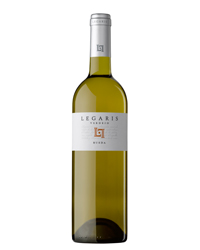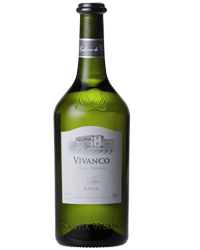When Spanish wine comes to mind, many of us immediately think of the beautiful Tempranillo-based reds of Ribera del Duero and Rioja. While we enjoy Spain’s red wines immensely, in summer we treat ourselves to the wide array of Spanish whites that we find at our local wine shop. While each variety and style has its own characteristics, we find that Spanish white wines are ideal with lighter summer fare, especially the fresh grilled seafood and sautéed shellfish we eat this time of year.
Rias Baixas: The main grape grown here is Albariño, used to make fresh, crisp white wines that pair exceptionally well with seafood and hold up to a touch of spice. They are generally drunk young but they will age for two or three years.
Condes de Albarei Albariño 2012: Flavors of lemon, pineapple, and melon with a clean, dry finish make this a great choice before dinner or with appetizers.
Robaliño Albariño 2012: Citrus flavors mingle with white flowers and mineral notes on the palate, with a touch of almond blossom on the finish. This is terrific with cooked seafood.
Pazo Señorans Albariño 2012: Notes of green apple, grapefruit, and tropical fruit with a hint of white flowers wash across the palate through the long, smooth finish.
Mar de Frades Albariño 2012: Clean and fresh with flavors of lemon-lime and river rocks, Mar de Frades is outstanding as an aperitif or with raw bar. Not sure if it’s cold enough? Wait for the little blue sailboat to appear on the label.
Rioja: Tempranillo isn’t the only game in town when it comes to Rioja. Many wineries here grow and produce white wines, made from Viura (also known as Macabeo), Malvasia, Garnacha Blanca, and Tempranillo Blanco, a recently discovered white mutation of the traditionally red grape. Some are made in a fresh, young style while others are barrel-aged for more complex flavors of caramel and spice. Try this Rioja, Vivianco (right).
Faustino VII Blanco 2012: Behind the old-fashioned label hides a young, bright wine made of 100% Viura that can be served on its own or with seafood salads.
Luis Alegre Viura 2012: Mostly Viura, the Luis Alegre is blended with a small amount of Malvasia for a floral lift on the nose. Pleasing flavors of pink grapefruit, peach, and lemon zest invite you in for another sip.
Next up, more of our favorite Spanish wines…
[pagebreak]Bodegas Muriel Blanco 2012: Also 100% Viura, this offering from Bodegas Muriel has flavors of tropical fruits and light spice, with a nice acidic finish. Enjoy with clams, mussels, or shrimp.

Rueda (left): About two thirds of the wine produced in Rueda is white, mainly from the Verdejo grape, with a small amount of Sauvignon Blanc as well. DO Rueda was founded in 1980, and many wineries that make reds in other parts of Spain have sister facilities here that specialize in white wine. Most are fruity, fresh, and meant to be enjoyed within a year or two after bottling.
Protos Verdejo 2012: Flavors of passion fruit, lemon curd, and a touch of chopped herbs with nice acidity pair well with sushi or spicy crudo.
Legaris Verdejo 2012: A bit more savory than others we tasted, the Legaris has flavors of guava and grapefruit with a nice bit of salinity, making it ideal with briny oysters or clams on the half shell.
Prado Rey PR3 Barricas 2008: Aged in three different barrels and then blended, PR3 has deep flavors of honeydew and cantaloupe with touches of vanilla and rose petal, but still retains a brightness. This is best with seafood, chicken, or pork in a light cream sauce.
Marques de Riscal Rueda 2012: The Marques de Riscal winery was one of the driving forces behind the founding of DO Rueda, and their commitment to quality shines through in this classic example of a fresh Verdejo. Tropical fruit flavors are joined in the mouth by herbal notes and clean acidity.



![Making Mealtime Matter with La Familia: Easy Sofrito [Video]](https://thelatinkitchen.com/wp-content/uploads/2015/10/sofrito-shutterstock__0-500x383.jpg)
![Easy Latin Smoothies: Goji Berry Smoothie [Video]](https://thelatinkitchen.com/wp-content/uploads/2015/12/goji_berry-shutterstock_-500x383.jpg)
















![Fun and Fast Recipes: Fiesta Cabbage Salad [Video]](https://thelatinkitchen.com/wp-content/uploads/2015/11/fiesta_cabbage_slaw-shutterstock_-500x383.jpg)









